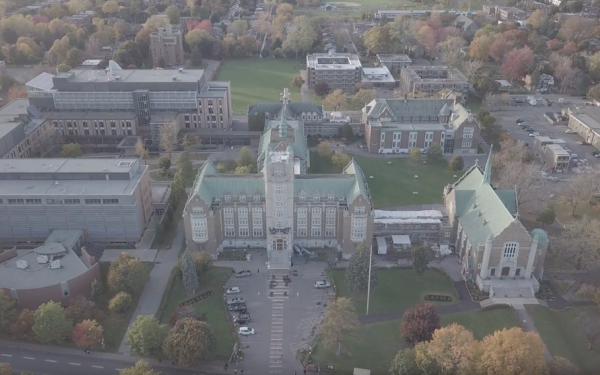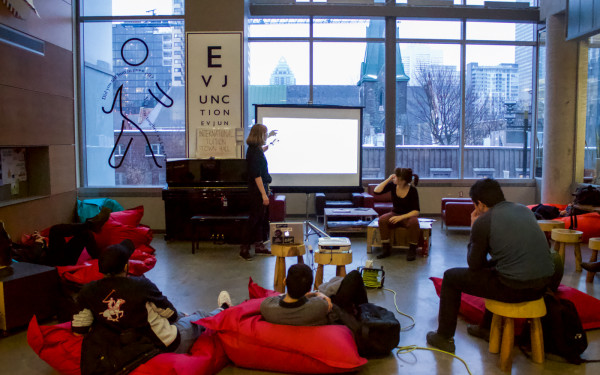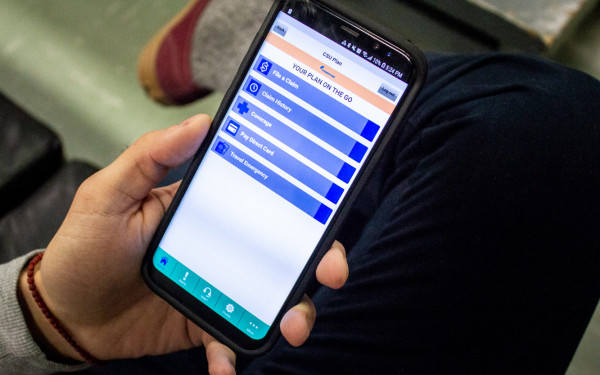Through a Gazan lens
Hossam Anwar’s photography was brought to life at the CSU’s Gaza in Focus exhibition
Hossam Anwar, a Palestinian photographer and videographer, risks his life every day to document the realities of occupied Gaza, often with little recognition.
In many ways, Anwar is just a regular 25-year-old guy. He graduated from the University of Palestine with a master’s in business management and is growing his Instagram account for photography.
But to the Israeli authorities, Anwar is a threat, and his camera a weapon.
On Jan. 26 at Eera Cafe in Montreal, Anwar’s work received its first live audience. Organized by the Concordia Student Union (CSU), the Gaza in Focus exhibition displayed Anwar’s photography at the intimate industrial-chic cafe, to a backdrop of experimental Arabic melodies and the hum of conversation.
The exhibition was dedicated to Anwar’s close friend and partner in photography, Muhannad Khaled, who recently died as a martyr in the war when two rockets hit his house on Nov. 23. The two had regularly collaborated on videos documenting the destruction of their city, specific issues like the sharp decline of fishing in Gaza, and small moments of human kindness. Several of their videos were shown at the exhibit.
Anwar’s relatability as a student and the raw humanity captured in his photos were what inspired the exhibit, said Danna Ballantyne, CSU external affairs and mobilization coordinator and one of the event’s main organizers.
“A lot of what they see is just morbid gore on their phones when we talk about Gaza,” Ballantyne said. “In the news, we’re numbers, we’re always victims, and there’s very little attention that’s paid to the humanity of people, Ballantyne said.”
Anwar’s photographs lined the cafe walls in a carefully curated mosaic. The subjects of the photos ranged from portraits of Gazan children with painted expressions, to ruins contrasted against seaside landscapes, to more abstract takes like a child’s toy amongst the rubble.
In the centre of the room, artist Mira Almuti was seated on an orange couch with a guitar and a qanun, a Middle Eastern string instrument with 26 strings. In her lilting voice, Almuti performed modern mixes of traditional Arabic songs and original lyrics.
“This is what humanity looks like,” attendee Deep Patel said when asked about his impression of the photographs.“When I look at these photos, it opens me up. This is why art is so powerful; it helps me connect with the people in Gaza with much greater sympathy.”
The crowd mingled with cups of floral teas and handheld Persian appetizers. People gathered in a shared mood of solemnity, seemingly transfixed by the music and images.
“It’s so important for people to step outside of their bubble of individualist culture and come to things like this,” said Deborah Wiens, a Concordia student in attendance. “As students, we’re so focused on our own individual goals, and often don’t care enough about what’s happening to people in other places in the world.”
Ines Chammaa of Esraya Designs, one of two artisan booths at the event, was selling dainty jewelry of book fandoms including ACOTAR and Vampire Academy alongside traditional Palestinian embroidery called tatreez. As an artist herself, Chammaa said that “art is inherently political.”
Chammaa stressed the importance of understanding the social and political context in which every artist works.
“For me, I'm influenced by growing up in the Levant, my political values and the books I've read, so that's what I bring to my art,” Chammaa said. “Hossam’s work is influenced by the destruction he sees every day and a life under occupation.”
For Anwar, taking photos is a dangerous act of bravery and rebellion. Carving out space in the art world can already be much harder for racialized artists, Ballantyne said. On top of this, the Israeli military often targets independent photographers in Gaza in the same way they do media journalists.
Additionally, Ballantyne shared that influencers and Western media are regularly stealing photos from Gazan creators, including Anwar, with little to no repercussions.
“It’s these big accounts that are out for a following, getting backing off of spreading trauma porn, who are stealing peoples’ works, and this was constantly happening to Hossam,” Ballantyne said.
Ballantyne said that the CSU first heard Anwar’s story from one of his friends who wanted to help him start a GoFundMe fundraiser. This initial connection sparked the vision of the exhibition, and a greater opportunity to educate people.
“In times like these, especially so recently after the ceasefire, there’s such a need for a regroup period, a time to process what we’ve been going through, to recentre ourselves and come together,” Ballantyne said.


_600_832_s.png)




_600_375_90_s_c1.jpg)